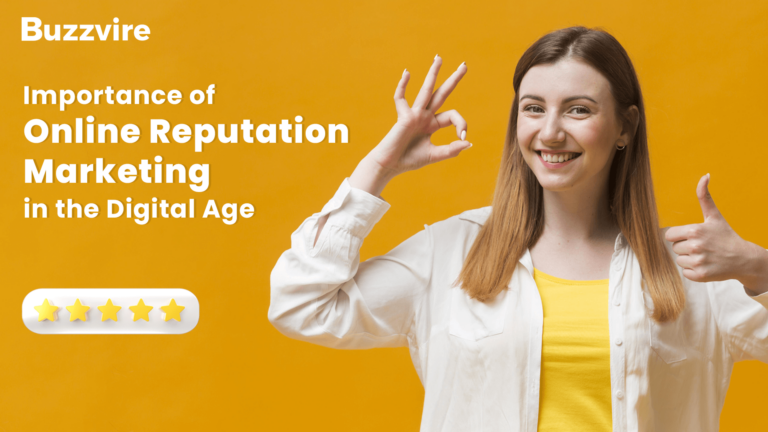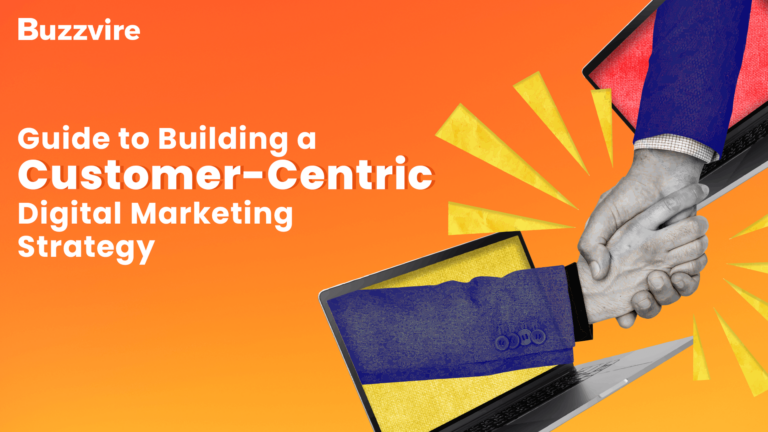Ads, promotions, and branding cannot go unnoticed online. Every digital platform we browse has some form of selling intention. And because of the widespread usage of digital platforms, it’s easier to reach a mass audience. The evolution of digital marketing is effective and undeniably necessary for individuals and companies.
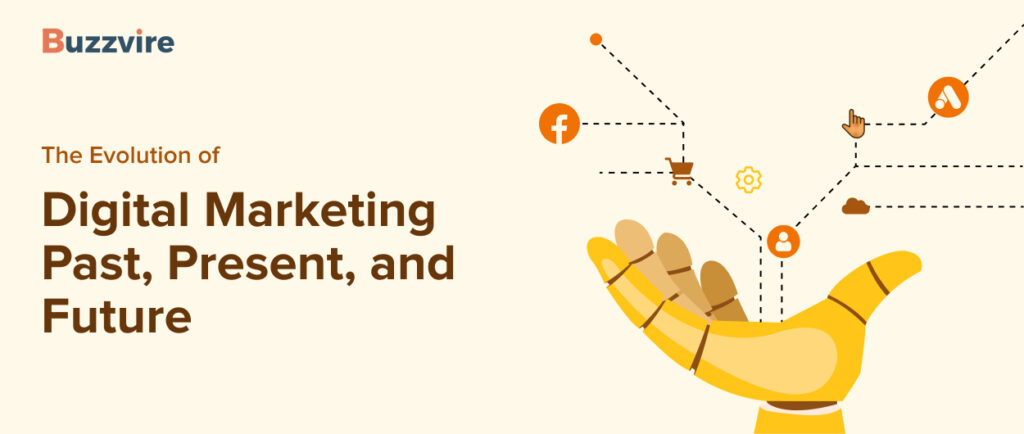
But everything eventually moves from more straightforward to more advanced, and so has digital marketing! In the below space, we see the history and evolution of digital marketing, how digital marketing has grown in importance and current trends, and what the future holds.
The Evolution of Digital Marketing

1993 saw the advent of the first clickable banner. The following year Yahoo broke records with nearly a million visits in its debut year. Website cookies or text files stored locally on the user’s machine were a breakthrough in digital marketing. Cookies allow websites to read user information such as browsing history, interests, usernames, and password remember options.
Later in that decade, Google showed up while Microsoft introduced the MSN search engine, Yahoo announced Yahoo web search and Live Search also came up. Email gained popularity as an outbound digital marketing asset. By 2004, Marketing and Internet advertising in the US brought in around $2.9 billion in revenue. Soon social networking sites like MySpace and Facebook opened ways for companies to advertise their products and services.
The rise of search engine optimization (SEO)
Search engines were easier to manipulate under no rules. Lots of keyword stuffing and spammy links made it easier to rank websites higher. Finding useful content was more challenging for a user searching for relevant content.
This was because website managers had found a way to create several links pointing to their websites artificially. Google saw the problem and started on an algorithm that rewarded quality and relevant content. Indeed, this came after several updates, and today, users get more accurate results.
The emergence of social media marketing
Just before the last millennium ended, Andrew Weinreich developed a site called Six Degrees. This is among the early known social media platforms. And they facilitated uploading user profiles and befriending other users. Another popular site was the Open Diary.
In 2006, Facebook launched and had a user base of about 50 million users. The popularity of social media introduced the idea of using it as a platform to advertise and promote products and services. Soon after Facebook Ads launched, other noteworthy social sites, namely Linkedin, Twitter, and Instagram, took the world by storm and slowly introduced marketing through their platforms.
The increasing importance of mobile optimization
With the staggering 55% of website traffic coming from mobile devices, optimizing websites for mobile is a top priority. In June 2023, data showed 9 in 10 internet users accessed the Internet with a mobile phone. Tiny buttons, illegible fonts, and difficulty scrolling are problems when users browse a non-mobile-optimized website. The benefits of mobile-optimized websites are:
- smooth navigation
- users spend more time on the site
- better conversions
The rise of video marketing and influencer marketing
Influencer marketing is one of the most well-liked and efficient social media marketing strategies for brands. Influencers strategically use video marketing to enthrall existing followers and engage new ones. From unboxing videos, product or location experience, product reviews, how-to videos, tutorials, and social media videos, influence and video marketing go hand-in-hand.
The impact of AI and machine learning
By analyzing trends in social media platforms and patterns of user behavior, AI and machine learning can aid digital marketing companies in foreseeing what consumers are likely to buy. AI and ML will drastically reduce the time needed to create highly-targeted and personalized campaigns. Today, AI and ML-powered tools adjust campaigns based on real-time trends to maximize their effectiveness.
Past Digital Marketing Strategies
Overview of early digital marketing strategies
In the initial days of traditional marketing, there was no data on the campaigns run. Companies needed help knowing whether they reached the right audience and whether the messaging was effective. This also led to slower customer conversions and wastage of revenue.
Examining the effectiveness of banner ads and email marketing
Banner ads, being dynamic, reached the required demographics, and the insights helped track the click rates. Email marketing allows A/B testing for perceiving the audience’s reaction to different messaging. Other statistics like open rates and link clicks help determine if your strategy is effective.
The impact of SEO on digital marketing
SEO is like the assistant that promotes your website’s expertise and relevance on the Internet. Increased visibility on search engine results from pages or SERPs means more organic traffic to your site. SEO promotes to search engines that your site is trustworthy, credible, user-friendly, and has content that matches the user’s query. An SEO-optimized site results in a better visitor experience and increases the time spent.
Present Digital Marketing Strategies
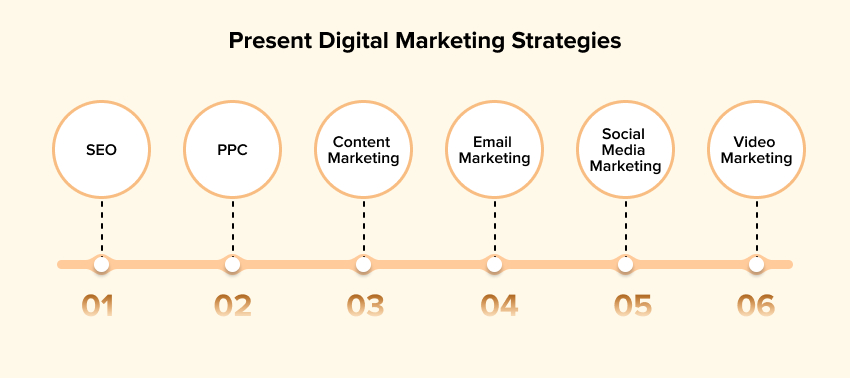
Overview of current digital marketing strategies
A well-researched marketing strategy helps drive business by utilizing research about your customer’s needs and pain points. Understand the power of different channels and implement a system apt for your customers and that channel.
Here are the most popular digital marketing strategies:
SEO
It is the most common way of making changes to your site, like optimized site structure, relevant content, friendly URLs, etc. You can achieve higher rankings in SERPs and bring organic traffic to your site.
PPC:
Paid search requires researching your target audience demographics to plan the keywords for bidding. Your audience will see the relevant ads based on your ad’s quality and budget.
Content marketing:
Bring your attention to your audience’s problems and find various media to address those with your content. Content marketing is a slower but sure way to convert your audience.
Email marketing:
Build relationships with your audience by sharing educational information and enriching material. You could announce your events, promotions and give them more reasons to stick with your company.
Social media marketing:
You can use various social platforms like LinkedIn, Twitter, and Instagram to:
- Build your customer base
- Engage your audience
- Branding and awareness
- Drive traffic to your website
- Conversions
Video Marketing:
Video marketing makes an effective digital marketing strategy. You can use customer testimonials, interviews with thought leaders, product demos, or how-to videos to get your audience interested and get closer to turning them into customers or subscribers.
Examining the effectiveness of content marketing and social media marketing
If done well, content marketing helps build a strong brand presence and domain authority. Position your company as an authoritative figure with original, helpful, and practical content. You can amplify your content marketing with social media promotion.
For your loyal followers, keep them engaged with interactive and interesting content. Using content and social media marketing, the best marketers target multiple customer personas at different stages of the buying journey.
The role of PPC advertising and email marketing in modern digital marketing
PPC advertising is a strategy where the ad creator pays when the user clicks on the ad. It would help if you researched what your audience is searching, for your ads to appear in the right search results. With email marketing, you can use the A/B method to understand your audience’s response to different offers and propositions. Turn those into insights for your PPC campaigns.
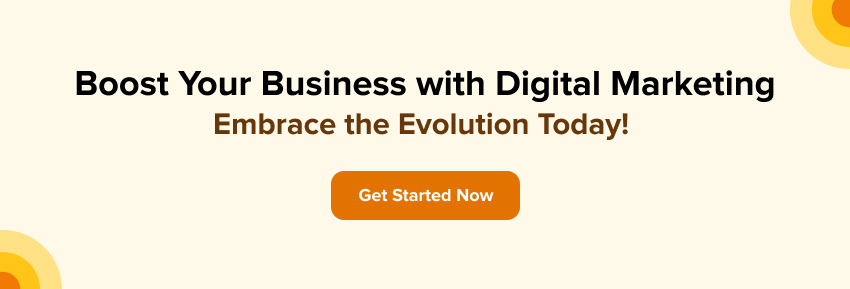
Future Digital Marketing Trends
Predictions for the Future of digital marketing
Marketing will get more data-driven and automation-heavy. AI and ML are expected to take up most tasks based on data analysis and trends. Tools like chatbots help save time from repetitive and monotonous tasks. Sending strategic emails on signup and subscription renewal due are tasks that companies automate to use resources more effectively.
The impact of emerging technologies on digital marketing strategies
Some of the technologies in nascent stages are augmented reality, visual search, and virtual reality. AR and VR help consumers get a feel of the finished look of a product or experience before purchase or trial. By easing the customer’s buying decision, you will likely win their trust in your service. At times, users may have a picture of a product they’ve come across somewhere and couldn’t find its description; visual search makes life easier. Users can search for identical or similar products just by uploading the image.
The Role of voice search and artificial intelligence in the future of digital marketing
Voice search and AI are an explosive combination for the future. The market size of global voice recognition could grow to $27.16 billion by 2026, according to Stockapps. For digital marketers, this is an excellent opportunity to tap into. As we see more voice searches, long-tail keywords become more prominent. Local SEO comes into play when voice search queries include directions or information about local businesses or services.
Impact of Technology on Digital Marketing
The impact of technological advancements on digital marketing
Technology comes in handy to manage volumes and reach your messaging to a larger audience. Technologies like data mining and machine learning help analyze your web traffic sources, identify their buying patterns, and when they’re mostly to purchase again. Digital marketing requires AI and ML to make sense of huge data volumes to analyze your larger audience or sample better.
The importance of staying up to date with technological trends
Trends give you a new direction or sometimes where to stay the course. In digital marketing, you must look out for disruption or things that have the potential to disrupt soon. If you’re not using the latest hashtags or creating content based on a trending topic, you could lose staying relevant for the industry and your followers. Staying on top of the marketing trends can be the difference between “Good, we did that” and “Oh! We should have done that too”.
Some ways you can stay ahead of the game by:
Subscribing to your industry blogs and newsletters: Read well-researched articles and whitepaper to know what’s trending
Watching social media trends: Hashtags and content quickly catch on to the trends
Industry Events – Attend events offline and online, meet and discuss with people in the know about what’s coming up
Subscribing to Google Alerts – Sign up for alerts on specific keywords, and Google will notify you when something new comes up
Online Forums – Read public forums to know what customers are demanding and what they’re concerned about
Measuring Digital Marketing Success
Overview of key performance indicators (KPIs) for measuring digital marketing success
All efforts applied in your digital marketing initiatives must be measurable to understand if your process is effective. Measurable processes help to optimize your marketing performance, allocate or adjust your marketing budget and work more efficiently towards your goals.
Here are a few KPIs to measure in your journey toward conquering the digital world:
Web Traffic Sources: This signals you to adjust or refocus your strategies to gain traffic from various sources
Leads: When targeting leads through content marketing or campaigns, you must group them. By sorting lead quality according to sources, you can filter your efforts to bring the best leads
Page Views: Studying your site’s page views gives you a better understanding of how visitors interact with the pages on a site.
Cost per Lead: The cost per lead (CPL) is the cost you incur to generate a new prospect from a marketing campaign. A lower CPL means you’re spending less to acquire a lead, which helps keep your costs down.
Returning Visitors: It is close to impossible to turn a single website into a paying customer. So return visitors allow website owners to investigate the popular pages that make visitors return.
Conversion Rate: The percentage of visitors turned into paying customers or completed any desired goal.
Goal Completion Rate: This is one of the most important metrics for increasing sales, engagement, and growth. For GCR, you divide the percentage of the number of goal conversions by the number of sessions.
Click-Through Rate: It tells you how many visitors clicked on the ad. The higher the CTR, the better your campaign is.
Customer Acquisition Cost: This metric tells how much you spend to acquire new customers for your company.
Customer Lifetime Value: Once you acquire a customer, you want them to be a paying customer for a long time. You arrive at the CLC by multiplying your customers’ average purchase value, the average number of times they purchase from you, and the average customer lifespan.
The importance of tracking and analyzing data
When you know what your customers like (or don’t) the most about your website, you can change your strategy to make it bring in more revenue. Tracking various metrics about your customer is helpful for your company’s growth and validating your methods.
Tracking data gives customer behavior insights about blogs, videos, infographics, and other material. Analyzing data eliminates guesswork about your customer’s preferences, and you can trace back the steps that led your customer to purchase or take any desired action.
Strategies for improving digital marketing ROI

ROI in digital marketing is how much profit or loss you make for the money you put in. You may adopt different strategies to understand what’s best for your goals and budget. ROI tells you how well those strategies are working.
However, some tried-and-tested strategies work well for most digital marketing goals.
Set ROI goals: Goal-setting is integral to any activity to test its fruitfulness. Set the right goals and ensure they’re specific, measurable, achievable, and relevant.
Make an apt tracking plan: Proper tracking will keep you on track. Milestones give you mini-wins and some scope to experiment a little.
Make data-driven decisions: Likes and follows are great, but if your goal is to increase conversions, you may have to re-look at your strategy. Metrics give you data to base your decisions. Identify your key metrics, and you’ll have data points to readjust your actions.
Common Mistakes in Digital Marketing
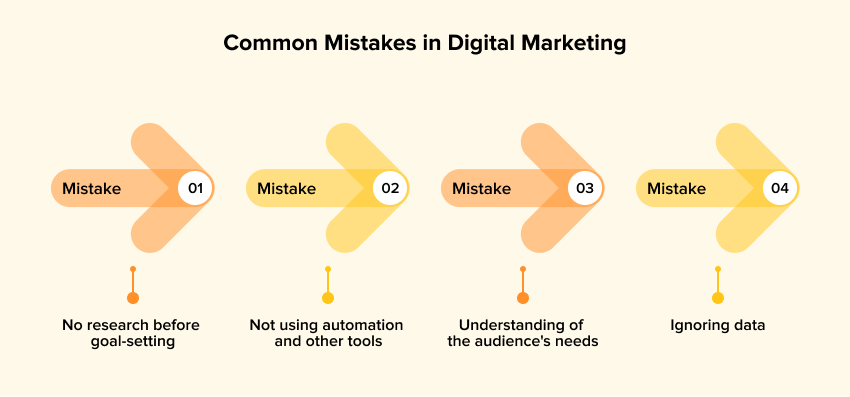
Overview of common mistakes made in digital marketing campaigns
Brands are increasing their digital marketing budgets because it’s an effective tool for business growth. But – not all brands are growing. Some standard practices lead to errors, misdirection of efforts, and lesser impact. We will be examining the impact of ineffective digital marketing strategies.
Here are some common digital marketing mistakes stopping brands from growing as expected:
No research before goal-setting: Organizations may have different goals. This is why strategies for one organization may only sometimes work for another. Revisit your past digital marketing goals and fine-tune them to match your company’s goals. This will ensure everything is correct from the past and align your company’s goals with digital marketing.
Not using automation and other tools: Human errors cause slowdown and even losses in some cases. Paid campaigns usually are effective when all efforts are in sync. From research to your landing pages and CTA requires careful inputs. Using automation and tools to analyze past data and current trends, you can avoid human errors and make your campaigns effective. With free and paid tools like Semrush, Ahref, Moz, and Google Analytics, your results will have little or no errors.
Need to understand the audience’s needs: Matching users’ search intentions is crucial to reach your target audience. Research your audience’s behaviors, preferences, and pain points. Start by using data-backed insights to create buyer personas. Now as per your campaign goals and marketing, craft the messaging accordingly. It’s important to know that buyers’ preferences change, so update your buyer personas to incorporate the changes in the campaign.
Ignoring data: Guesswork doesn’t get you results. Data is paramount for managing your company’s digital marketing budget effectively and keeping things streamlined. It builds the foundation for proven results. Ignoring data puts your marketing efforts at risk. Use data from your previous campaign, research about your audience, and competitor analysis to create and implement effective strategies.
Final thoughts on the future of digital marketing
In the digital marketing world, things move fast. We moved from fixed and generic campaigns to hyper-personalized messaging. Tools can now predict what consumers may want, allowing brands to use this data for early influence and conversions. Latching onto a trend may just be following the crowd, but not being part of the crowd robs you of the chance to appear as an “always updated” brand. Keep a close eye on your competitors because it’s highly likely what’s working for your competitors is useful for you too. The future of digital marketing is about automation, integrated with our lifestyle, and using data smartly. So ensure you get all the newer ways to connect with your audience.
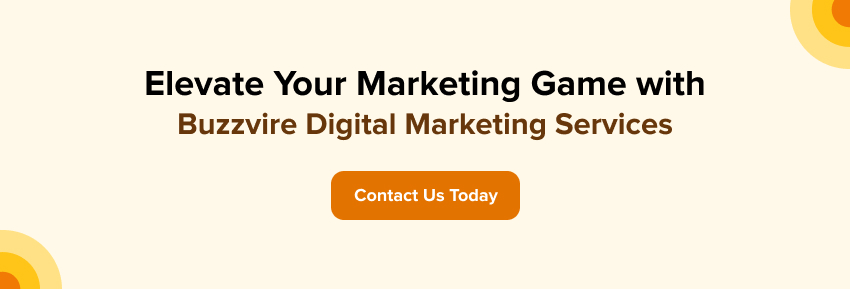
FAQs
Digital marketing is how brands use various digital channels to promote their services and products. Some channels are email, websites, paid search, and SEO. Over time, digital marketing has become more intelligent in using data about trends and the industry to persuade the target audience better.
The email was (and still is) among the popular digital marketing tools. With the introduction of browsers, SEO and SEM came into play. Social media marketing slowly began when Facebook ads launched.
Digital marketing today relies heavily on data. This allows companies to leverage data about prospects and leads to target them more effectively. Today’s digital marketing involves extensive automation and tools for data analysis and running campaigns for a higher ROI.
Influencer and video marketing are popular trends—voice search and AI, ML, and deep learning help to simplify executing marketing strategies.
A unified omnichannel digital marketing strategy is possible to take priority. Google’s Performance Max uses inputs from the user to automatically run budget-allocated and personalized ads across all of Google’s ad platforms. This shows the future of digital marketing deeply integrated with technology and automation.


